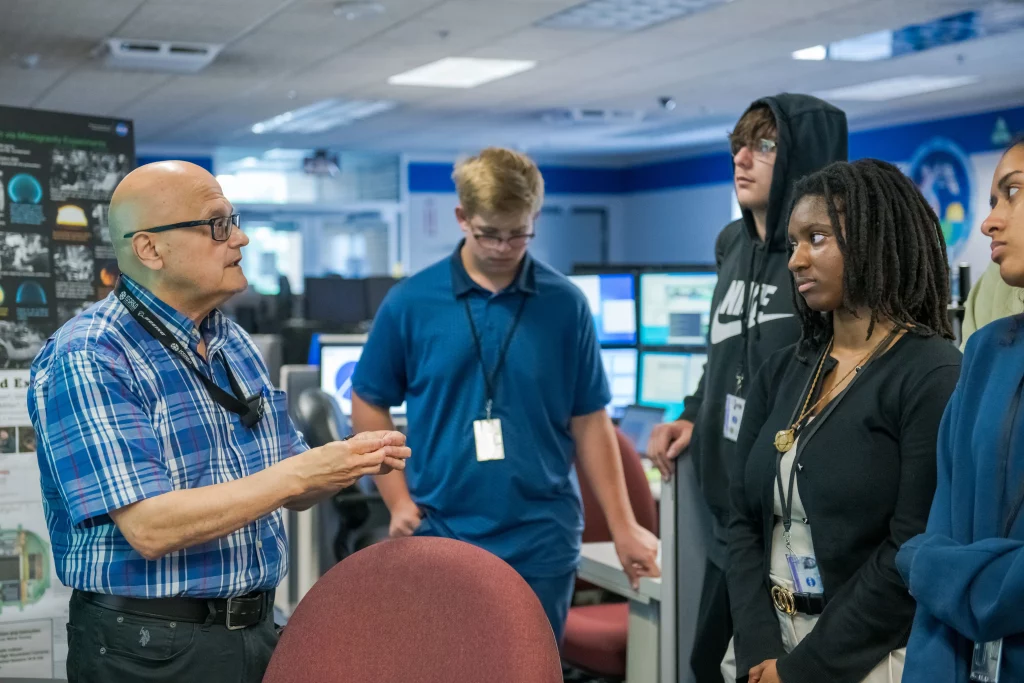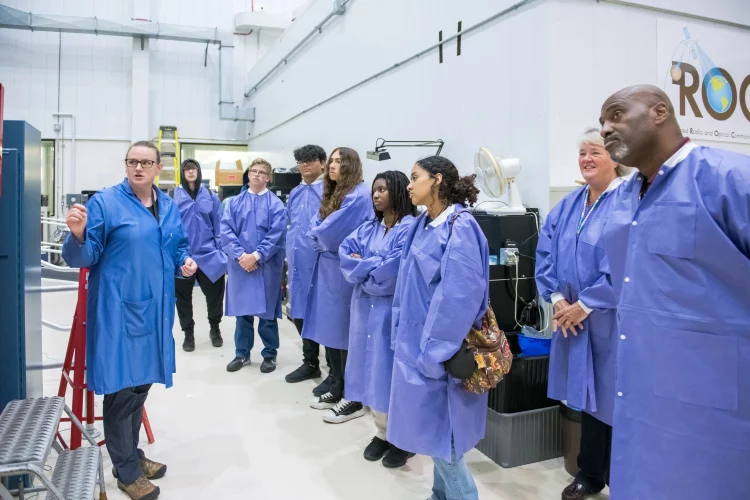Introduction
In an era where technological advancements shape every aspect of our lives, nurturing the next generation of scientists, engineers, and innovators is more crucial than ever. NASA’s commitment to education and outreach is exemplified by its innovative programs that connect students with real-world STEM (Science, Technology, Engineering, and Mathematics) experiences. One such initiative recently provided Cleveland high school students with an extraordinary opportunity to explore STEM careers through immersive experiences and hands-on activities. This article delves into the details of this impactful program, exploring its goals, activities, and the broader implications for the students and the future workforce.
1. The Importance of STEM Education
STEM education is pivotal in preparing students for future careers in a rapidly evolving technological landscape. The importance of early exposure to STEM fields cannot be overstated, as it helps:
- Foster Critical Thinking: Encouraging analytical and problem-solving skills through STEM education.
- Promote Innovation: Inspiring creativity and innovation by engaging students in cutting-edge technologies and research.
- Prepare for Future Careers: Equipping students with the knowledge and skills needed for careers in high-demand fields.
1.1 Current Trends in STEM Careers
The demand for STEM professionals continues to grow as technology advances:
- Emerging Technologies: Fields such as artificial intelligence, robotics, and biotechnology are creating new career opportunities.
- Interdisciplinary Skills: Modern STEM careers often require a blend of skills from different disciplines, underscoring the need for a comprehensive education.
1.2 Challenges in STEM Education
Despite its importance, STEM education faces several challenges:
- Equity and Access: Ensuring that all students, regardless of background, have access to high-quality STEM education.
- Engagement and Retention: Keeping students engaged and motivated throughout their educational journey in STEM fields.
2. Overview of the STEM Career Exploration Program
The STEM Career Exploration Program for Cleveland high school students is a testament to NASA’s dedication to fostering future generations of STEM professionals. This initiative aims to provide students with firsthand experiences that highlight the diverse opportunities within STEM fields.
2.1 Program Objectives
The program has several key objectives:
- Expose Students to STEM Careers: Providing insights into various STEM careers through interactive experiences and presentations.
- Enhance Understanding of STEM Fields: Helping students understand the practical applications and impact of STEM disciplines.
- Inspire Future Career Choices: Motivating students to pursue STEM-related careers by showcasing real-world applications and success stories.
2.2 Program Structure and Activities
The program is designed to offer a comprehensive and engaging experience:
- Workshops and Seminars: Students participate in workshops and seminars led by STEM professionals who share their knowledge and experiences.
- Hands-On Activities: Interactive activities and demonstrations allow students to experience STEM concepts in action.
- Facility Tours: Students tour state-of-the-art laboratories, research centers, and other facilities to see STEM applications up close.
3. Highlights of the Program Experience
The program provided an array of engaging and educational experiences that left a lasting impact on the participating students.
3.1 Interactive Workshops
Workshops were a central component of the program:
- Engineering Challenges: Students tackled engineering challenges that required problem-solving and teamwork, mimicking real-world engineering tasks.
- Science Experiments: Hands-on science experiments allowed students to explore concepts in physics, chemistry, and biology.
3.2 Career Panels and Discussions
Career panels featured professionals from various STEM fields:
- Diverse Career Paths: Panelists discussed their diverse career paths, including roles in aerospace, robotics, and environmental science.
- Q&A Sessions: Students had the opportunity to ask questions and gain insights into the daily lives and career trajectories of STEM professionals.
3.3 Technology Demonstrations
Demonstrations showcased cutting-edge technologies:
- Robotics and Automation: Students interacted with robotic systems and learned about their applications in different industries.
- Space Exploration: Interactive exhibits on space exploration highlighted NASA’s missions and technologies.
4. Impact on Students
The STEM Career Exploration Program had a profound impact on the participating students, influencing their perceptions and aspirations in STEM fields.
4.1 Increased Interest in STEM
Many students reported a heightened interest in STEM careers:
- Exposure to Role Models: Meeting professionals and seeing their work firsthand inspired students to pursue similar career paths.
- Hands-On Learning: Engaging in hands-on activities helped students understand complex STEM concepts and their real-world applications.
4.2 Enhanced Career Awareness
The program enhanced students’ awareness of STEM careers:
- Understanding Career Opportunities: Students gained a clearer understanding of the diverse career opportunities available within STEM fields.
- Informed Decision-Making: The experience helped students make more informed decisions about their future education and career choices.
4.3 Skill Development
Students developed valuable skills through the program:
- Problem-Solving Skills: Working on engineering challenges and experiments fostered critical thinking and problem-solving abilities.
- Collaboration and Communication: Team-based activities enhanced students’ collaboration and communication skills.

5. The Role of NASA and Partners
NASA and its partners played a crucial role in the success of the STEM Career Exploration Program.
5.1 NASA’s Commitment to Education
NASA has a longstanding commitment to education and outreach:
- Educational Programs: NASA’s educational programs aim to inspire and engage students in STEM fields through hands-on experiences and learning opportunities.
- Partnerships: NASA collaborates with educational institutions, industry partners, and community organizations to support STEM education.
5.2 Collaborating Organizations
Several organizations contributed to the program:
- Local Schools and Educators: Collaboration with local schools and educators ensured that the program was tailored to meet the needs of the students.
- Industry Partners: Industry partners provided expertise, resources, and technology demonstrations, enriching the program experience.
6. Looking Forward: Future Initiatives and Opportunities
The success of the STEM Career Exploration Program opens the door for future initiatives and opportunities.
6.1 Expanding the Program
There are plans to expand and enhance the program:
- Additional Workshops: Introducing new workshops and activities to cover a broader range of STEM topics.
- Increased Participation: Increasing the number of students and schools participating in the program to reach a wider audience.
6.2 Creating Lasting Impact
The goal is to create a lasting impact on students:
- Ongoing Support: Providing ongoing support and resources for students interested in pursuing STEM careers.
- Building a STEM Community: Fostering a community of learners, educators, and professionals who support and inspire each other.
6.3 Future Collaboration
Future collaborations will continue to play a key role:
- Partnerships with Educational Institutions: Collaborating with schools and universities to develop and implement new STEM education initiatives.
- Engagement with Industry: Working with industry partners to provide students with real-world experiences and insights.
7. Conclusion
The STEM Career Exploration Program for Cleveland high school students is a shining example of how immersive experiences and hands-on activities can ignite a passion for STEM fields. By exposing students to a wide range of career opportunities and providing them with valuable skills and knowledge, the program is paving the way for the next generation of innovators and leaders in science, technology, engineering, and mathematics. As NASA and its partners continue to support and expand these initiatives, they are helping to shape a brighter future for students and advancing the frontiers of STEM education and exploration.


















































Discussion about this post